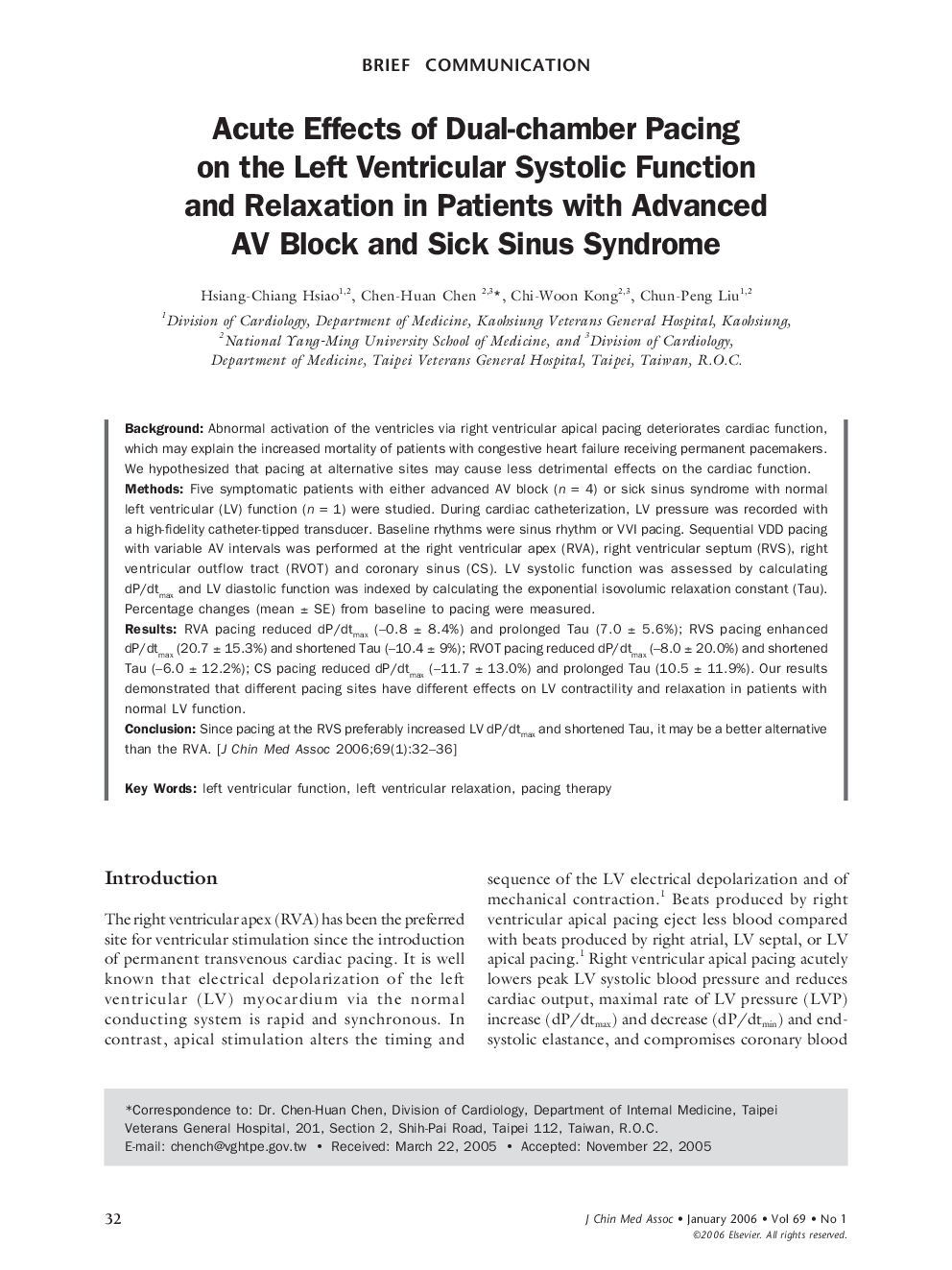| کد مقاله | کد نشریه | سال انتشار | مقاله انگلیسی | نسخه تمام متن |
|---|---|---|---|---|
| 3477692 | 1233355 | 2006 | 5 صفحه PDF | دانلود رایگان |

BackgroundAbnormal activation of the ventricles via right ventricular apical pacing deteriorates cardiac function, which may explain the increased mortality of patients with congestive heart failure receiving permanent pacemakers. We hypothesized that pacing at alternative sites may cause less detrimental effects on the cardiac function.MethodsFive symptomatic patients with either advanced AV block (n = 4) or sick sinus syndrome with normal left ventricular (LV) function (n = 1) were studied. During cardiac catheterization, LV pressure was recorded with a high-fidelity catheter-tipped transducer. Baseline rhythms were sinus rhythm or VVI pacing. Sequential VDD pacing with variable AV intervals was performed at the right ventricular apex (RVA), right ventricular septum (RVS), right ventricular outflow tract (RVOT) and coronary sinus (CS). LV systolic function was assessed by calculating dP/dtmax and LV diastolic function was indexed by calculating the exponential isovolumic relaxation constant (Tau). Percentage changes (mean ± SE) from baseline to pacing were measured.ResultsRVA pacing reduced dP/dtmax (-0.8 ± 8.4%) and prolonged Tau (7.0 ± 5.6%); RVS pacing enhanced dP/dtmax (20.7 ± 15.3%) and shortened Tau (-10.4 ± 9%); RVOT pacing reduced dP/dtmax (-8.0 ± 20.0%) and shortened Tau (-6.0 ± 12.2%); CS pacing reduced dP/dtmax (-11.7 ± 13.0%) and prolonged Tau (10.5 ± 11.9%). Our results demonstrated that different pacing sites have different effects on LV contractility and relaxation in patients with normal LV function.ConclusionSince pacing at the RVS preferably increased LV dP/dtmax and shortened Tau, it may be a better alternative than the RVA.
Journal: Journal of the Chinese Medical Association - Volume 69, Issue 1, January 2006, Pages 32-36